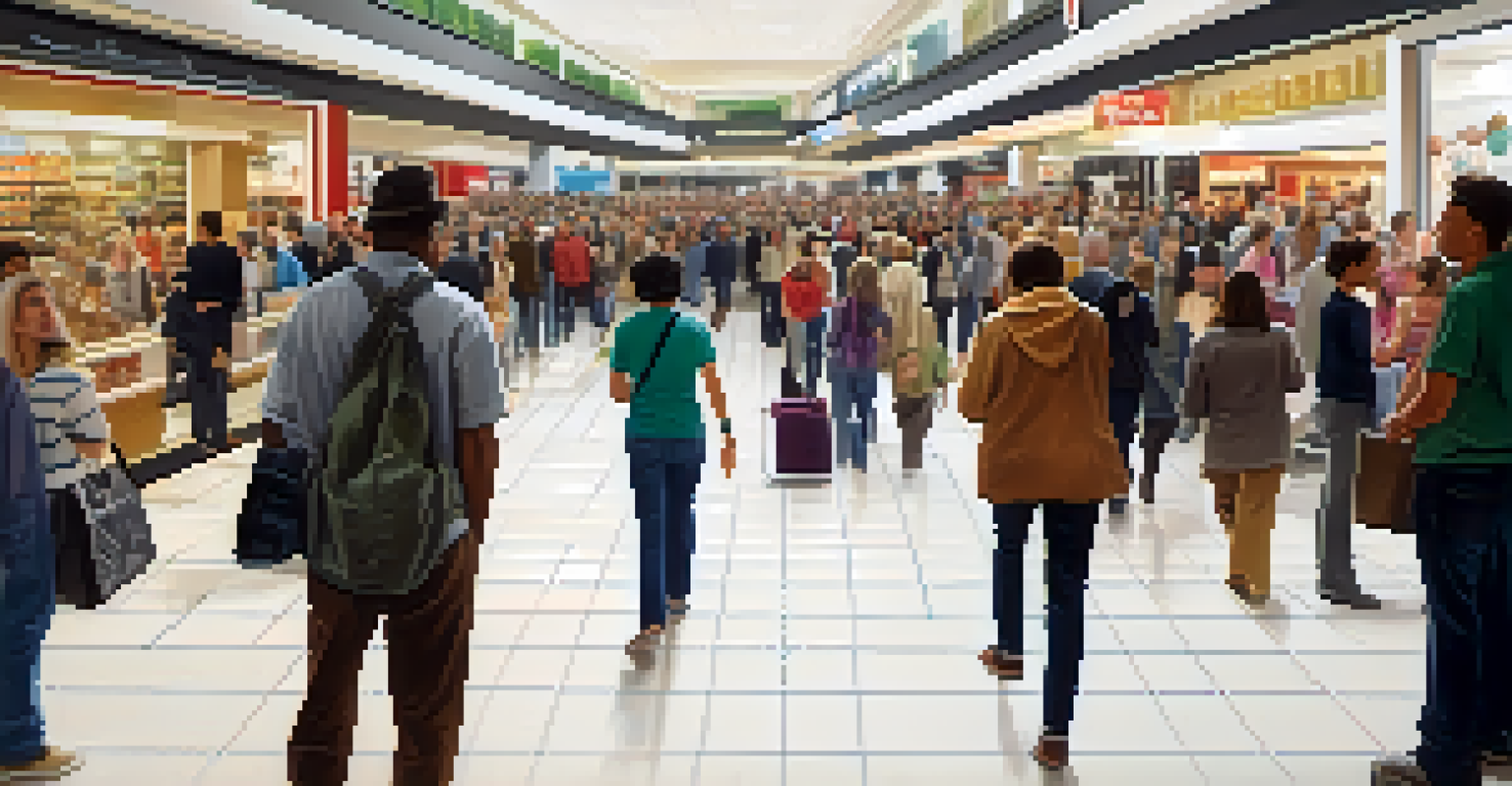The Importance of Local Geography in Self Defense Planning

Why Local Geography Matters in Self Defense Planning
When it comes to self-defense, understanding the local geography can be a game changer. The terrain, environment, and layout of your surroundings influence your safety and defensive strategies. For instance, urban areas with crowded streets present different challenges compared to rural locations with open fields. Recognizing these differences is crucial for effective self-defense planning.
The best defense is a good awareness of your surroundings.
Consider a scenario where you find yourself in a narrow alley. The confined space limits your movement, making it essential to adapt your strategy. On the other hand, a wide-open park gives you more options, such as escape routes or places to hide. Thus, local geography directly impacts your ability to respond to threats.
Ultimately, being aware of your environment allows you to prepare better and make informed decisions in high-pressure situations. This knowledge can significantly enhance your confidence and effectiveness in self-defense.
Assessing Potential Threats in Your Environment
Different geographic areas come with distinct potential threats. For instance, a neighborhood with a high crime rate may require a different self-defense approach than a generally safe suburban area. By assessing local crime statistics and trends, you can tailor your self-defense strategies to your unique environment.

Imagine living in a city known for its nightlife. While this can be enjoyable, it also means you need to be vigilant in crowded venues or dark streets. Identifying these high-risk areas in your local geography allows you to plan safer routes and avoid risky situations.
Local Geography Shapes Defense Plans
Understanding your surroundings, from urban layouts to rural terrains, is crucial for developing effective self-defense strategies.
In addition, understanding the geography can help you identify safe havens, such as well-lit public places or nearby establishments, where you can seek help if needed. This proactive approach not only increases awareness but also enhances personal safety.
Utilizing Natural Features for Defense
Local geography includes natural features like hills, trees, and rivers that can be advantageous in self-defense situations. These elements can provide cover or concealment, giving you a strategic edge. For example, if you’re in a wooded area, trees can serve as barriers between you and a potential threat.
Preparation is the key to success in any confrontation.
Consider a scenario where you're being followed in a park. If you know the area well, you might be able to navigate toward dense foliage or a pond, where you can either hide or find a way to escape. Utilizing the surroundings can make a significant difference in how you respond to danger.
Moreover, understanding the seasonal changes in your local geography can also affect your self-defense planning. For example, snow-covered paths may limit visibility, while summer foliage can create more hiding spots. Being aware of these factors can help you stay one step ahead.
Creating Escape Routes Based on Local Layout
Planning escape routes is a vital aspect of self-defense, and local geography plays a significant role in this. Knowing the quickest and safest paths to exit an area can be lifesaving. For example, if you frequently visit a new place, take the time to familiarize yourself with the layout, including potential exits and obstacles.
Picture yourself in a shopping mall. By knowing where the entrances and exits are, you can quickly navigate to safety in case of an emergency. Additionally, recognizing areas that may become congested during a crisis can help you avoid being trapped.
Assess Threats Based on Location
Evaluating local crime statistics and identifying high-risk areas can help tailor your self-defense approach to your specific environment.
In essence, an effective self-defense plan incorporates well-thought-out escape routes tailored to the local geography. This foresight can drastically improve your chances of evading danger.
Evaluating Crowd Behavior in Various Settings
Crowds can either provide safety in numbers or pose risks, depending on the local geography. For instance, in a busy urban center, a large crowd might deter criminal activity, while in a less populated area, it could create opportunities for trouble. Understanding how crowds behave in your environment is critical for self-defense planning.
Imagine attending a concert in a large venue. While it’s easy to get lost in the crowd, you also need to be aware of exit routes and potential panic points. The layout of the venue can significantly influence how you react in emergencies, so it’s essential to evaluate these factors ahead of time.
Thus, being mindful of crowd dynamics and local geography can enhance your awareness and preparedness, allowing you to respond more effectively in various situations.
Tailoring Self Defense Techniques to Your Environment
Different geographic settings may require specific self-defense techniques. For example, if you live in an urban area with confined spaces, techniques that leverage close-quarter defense can be beneficial. Conversely, in open spaces, long-range techniques may be more effective.
Consider how self-defense classes often teach techniques based on common scenarios. A class focused on urban defense will likely address issues like dealing with multiple attackers in tight spaces, while a rural setting may emphasize evasion and escape tactics in open fields.
Community Awareness Enhances Safety
Engaging with local organizations and neighbors fosters a collective sense of security, improving individual and community self-defense readiness.
By tailoring your self-defense skills to your local geography, you enhance your ability to respond effectively to potential threats. This adaptation not only boosts your confidence but also makes your self-defense training more relevant and applicable.
The Role of Community Awareness in Self Defense
Community awareness is a vital component of self-defense planning, especially when considering local geography. Engaging with your neighbors and local organizations can provide valuable insights into your area’s safety. By sharing information about potential threats and safe practices, you can create a more secure environment together.
For instance, neighborhood watch groups often focus on local crime patterns and how geography plays a role in them. By participating in such initiatives, you not only gain more knowledge about your surroundings but also contribute to a collective sense of safety.

Ultimately, fostering community awareness enhances individual and collective self-defense strategies, making everyone more vigilant and prepared for potential threats.